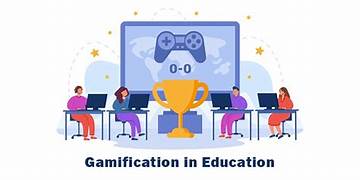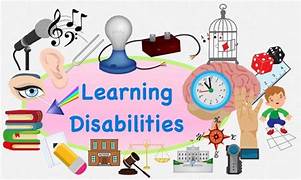How Gamification is Changing Education
Think about the last time you played a game—did it keep you engaged, challenge you, and maybe even teach you something? Now imagine bringing that same excitement into the classroom. That’s exactly what gamification in education is all about. By incorporating game-like elements into learning, educators are transforming dull, traditional lessons into interactive, rewarding experiences.
Gamification isn’t just about adding points or badges; it’s about creating an environment where students feel motivated, curious, and ready to tackle challenges. It leverages the mechanics of games—such as rewards, levels, and leaderboards—to encourage participation and foster a deeper connection with the material.
In this article, we’ll explore the concept of gamification in education, its benefits, and how it’s being implemented worldwide. We’ll also look at the challenges it faces and its potential to revolutionise the learning process for generations to come.
What is Gamification in Education?
Gamification refers to the use of game design principles in non-game settings, such as education. In classrooms, this means integrating elements like points, challenges, and feedback to make learning more engaging.
Key Features of Gamification
- Points and Rewards: Students earn points or badges for completing tasks or mastering skills.
- Challenges and Quests: Lessons are framed as missions, making learning feel like an adventure.
- Leaderboards: A ranking system adds a competitive element, motivating students to improve.
- Instant Feedback: Like games, gamification provides immediate responses, helping students identify areas for improvement.
This approach shifts the focus from rote memorisation to active participation, ensuring students enjoy the process of learning.
Why Gamification Works
Gamification taps into intrinsic and extrinsic motivators, which makes it effective in education.
Intrinsic Motivation
When students find learning enjoyable, they’re more likely to engage with the material. Gamified systems make lessons feel less like a chore and more like an exciting challenge.
Extrinsic Motivation
Rewards, such as badges or leaderboard rankings, encourage students to complete tasks and achieve goals, creating a sense of accomplishment.
By combining these motivators, gamification fosters a balanced learning environment where students feel driven and supported.
Benefits of Gamification in Education
Enhanced Engagement
Games naturally capture attention, and gamification brings that same level of engagement to the classroom. Students participate more actively and are less likely to lose focus.
Improved Learning Retention
Gamified activities often involve repetition, problem-solving, and rewards—all of which enhance memory retention. Students not only learn but remember concepts for longer periods.
Fosters Collaboration and Teamwork
Many gamified systems include group challenges, encouraging students to work together and build social skills. This collaborative approach prepares them for real-world teamwork.
Encourages a Growth Mindset
Games teach students to see failure as part of the process. By attempting levels or challenges multiple times, they learn resilience and the value of persistence.
Customisable Learning Experiences
Gamification allows educators to tailor activities to meet diverse needs, ensuring that all students feel included and supported.
How Gamification is Being Implemented
Gamified Learning Platforms
Platforms like Classcraft and Kahoot! integrate gamification into daily lessons. They offer quizzes, challenges, and rewards that make learning feel like a game.
Subject-Specific Games
Subjects like maths and science are gamified through apps like Prodigy and Minecraft Education Edition, helping students understand complex topics in a fun way.
Interactive Quizzes and Polls
Tools like Quizizz turn traditional quizzes into exciting competitions, where students can earn points and track their progress in real time.
Virtual Reality (VR) and Augmented Reality (AR)
Innovative tools like VR and AR are being used to gamify learning. For example, students can explore historical landmarks or solve real-world problems through immersive simulations.
Challenges in Adopting Gamification
Resource Constraints
Not all schools have access to the technology required for gamification, creating a gap between institutions with different resources.
Overemphasis on Rewards
While rewards are motivating, they can overshadow the intrinsic value of learning if not balanced properly.
Teacher Training
Educators need proper training to design and implement gamified lessons effectively. Without guidance, gamification efforts may fall flat.
Balancing Fun with Learning
While gamification should make learning enjoyable, it must still achieve educational goals. Striking the right balance is crucial.
Examples of Successful Gamification in Schools
Quest to Learn (United States)
This New York-based school uses game mechanics in its curriculum, transforming traditional lessons into immersive quests.
Duolingo
This popular language-learning app uses gamification to encourage daily practice. Its point system, streaks, and challenges keep learners motivated.
LEGO Education
LEGO Education combines gamification with hands-on activities, allowing students to build and explore concepts creatively.
The Future of Gamification in Education
The potential for gamification is enormous. As technology advances, tools like artificial intelligence, VR, and AR will make gamified education even more immersive and accessible.
Imagine a future where students solve environmental crises through gamified simulations or collaborate globally in virtual classrooms to tackle world problems. By embracing these innovations, educators can create learning experiences that are not only effective but also enjoyable.
How Educators and Parents Can Support Gamification
For Educators
- Design lessons that integrate gamified elements like challenges and rewards.
- Use gamification tools that align with curriculum goals.
- Provide feedback that encourages effort and improvement.
For Parents
- Encourage gamified learning at home through educational apps and games.
- Reinforce the value of learning beyond rewards.
- Collaborate with teachers to ensure gamified methods are meaningful.
Conclusion
Gamification is more than a trend; it’s a
revolution in how we approach education. By making learning engaging, interactive, and rewarding, gamification addresses many of the challenges traditional teaching methods face. While there are hurdles to overcome, the benefits—enhanced engagement, better retention, and skill development—make it a powerful tool for educators worldwide. As technology continues to evolve, gamified education will only grow more sophisticated, transforming classrooms into vibrant hubs of creativity and discovery.
FAQs
- What is gamification in education?
Gamification involves applying game design elements to educational settings, such as points, rewards, and challenges, to make learning more engaging. - How does gamification enhance learning?
It boosts engagement, improves retention, and encourages active participation by making lessons feel fun and interactive. - What are some examples of gamification tools?
Platforms like Kahoot!, Classcraft, and Duolingo are popular examples that integrate game mechanics into education. - What challenges do schools face with gamification?
Common challenges include limited resources, balancing fun with educational goals, and ensuring teachers are properly trained. - How does gamification support teamwork?
Many gamified activities involve group challenges, fostering collaboration and communication among students. - Can gamification work for all subjects?
Yes, gamification can be adapted to most subjects, from maths and science to history and language learning. - What is the future of gamification in education?
The future includes more immersive experiences using VR, AR, and AI to make learning even more engaging and effective.






